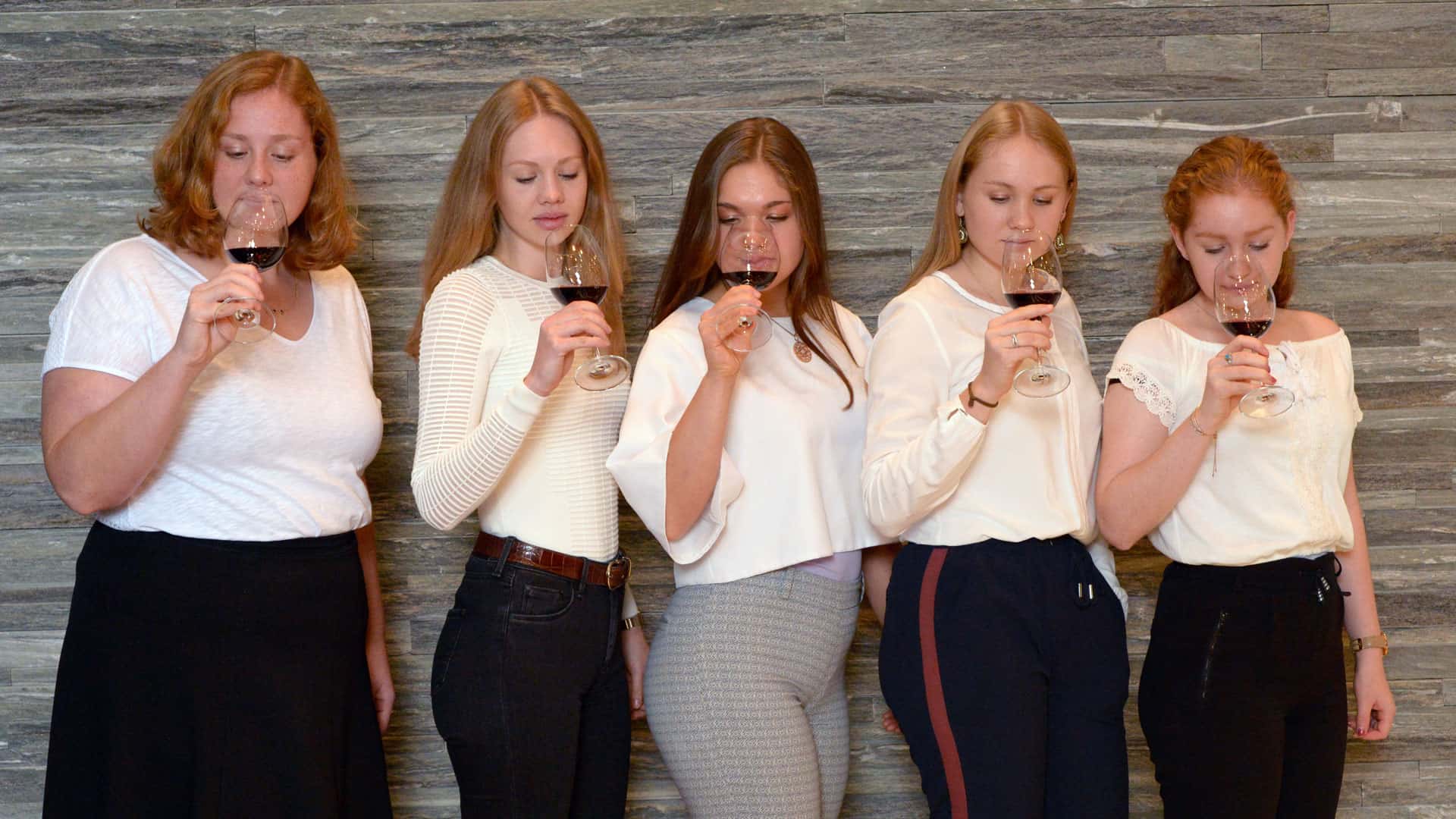How do I taste wine properly?
Requirements for optimal wine tasting
To be able to judge a wine, the following requirements should be met:
- Refrain from smoking and drinking coffee before and during the tasting
- Do not eat spicy food before the wine tasting
- Be physically fit and healthy for the wine tasting
- Better to plan tastings in the morning
- The ideal time for wine tasting is shortly before midday
- Ventilate the tasting room well, no foreign odors
- Tasting in a bright room with natural light
- Provide bread and water to neutralize during tasting
- Suitable temperatures of the wines
Factors for wine evaluation
The wine is judged on three main factors during a tasting:
- Color and clarity of the wine > Eye
- Taste > Palate
- Smell or the bouquet > Nose
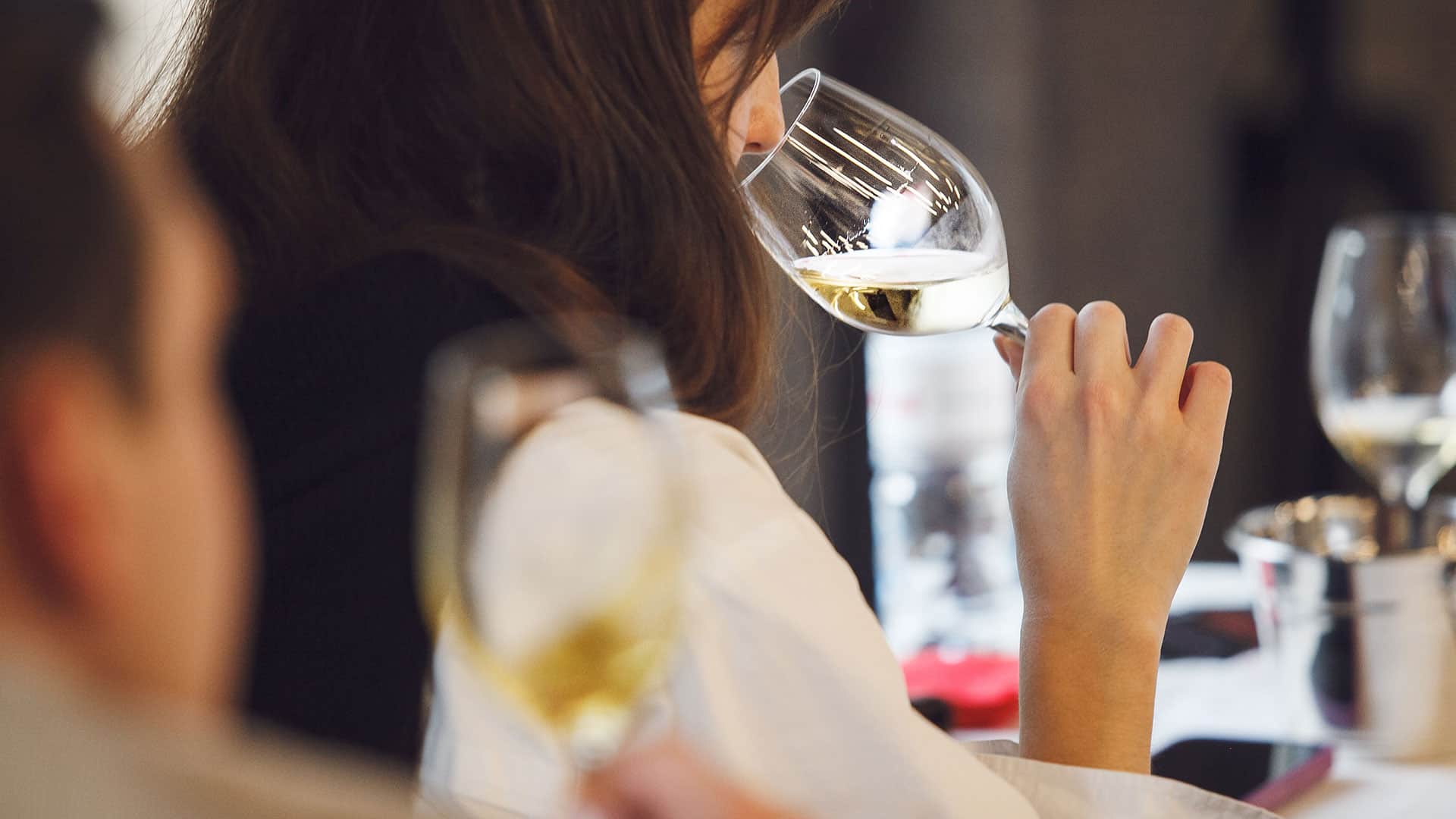
It is therefore an interplay of sensory impressions. The overall picture of the wine during tasting is also determined by the sense of touch, the texture of the glass and, in the broadest sense, also by hearing, when the finest crystal glasses are sonorously knocked together during wine tasting. The emotional and physical state during the tasting, the environment and our experiences often determine how well we can taste something. Ideally, a wine tasting should be carried out by a professional winemaker in a wine cellar / cave.
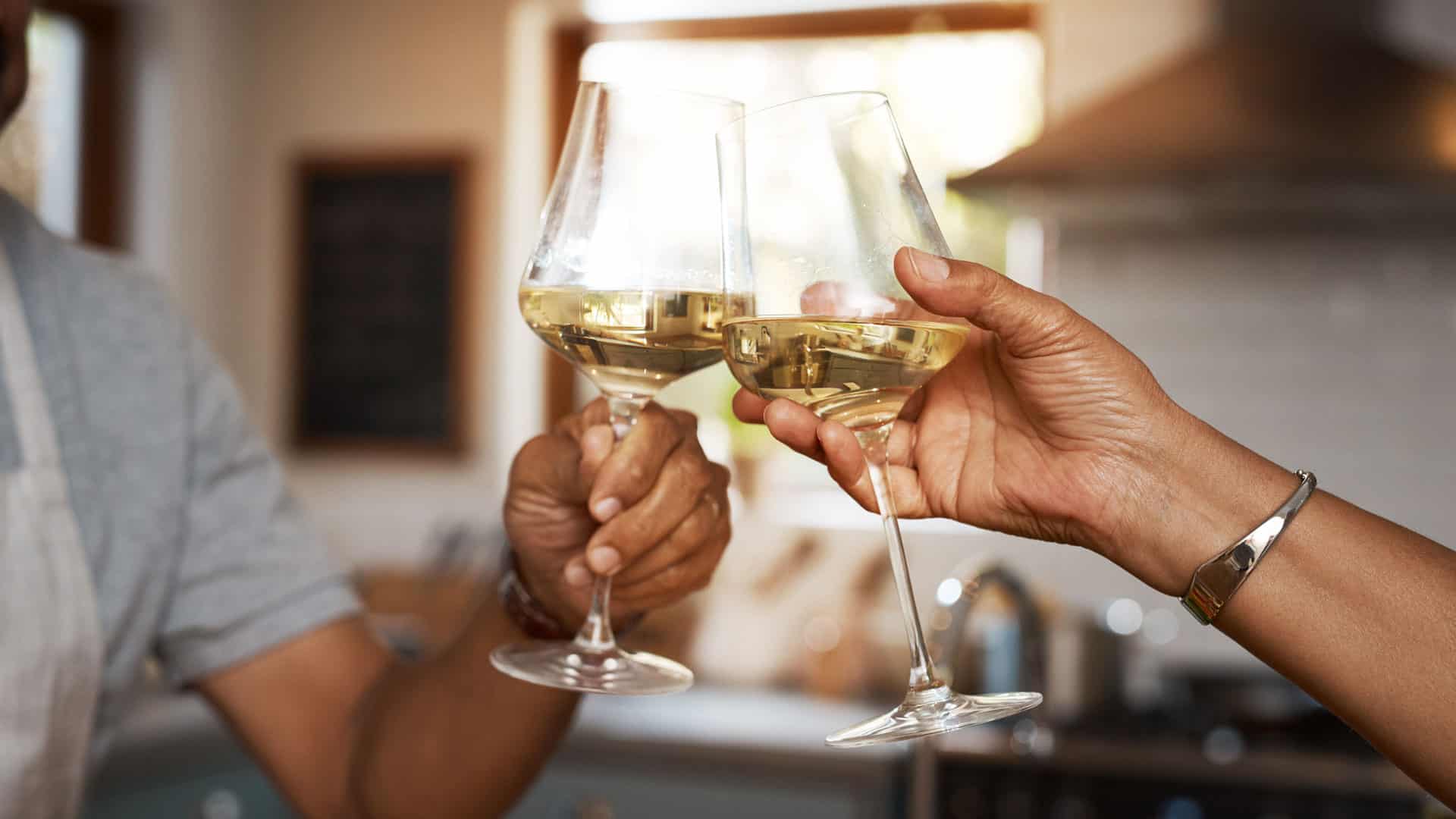
Researchers have established on the basis of broad observations that the sense of taste can vary greatly for genetic reasons. There are so-called “super tasters”, who certainly have the greatest talent for good wine tasting in the cave.
In this context, it is also interesting to note that our sensitivity to taste remains largely stable over the course of our lives, but our sensitivity to smell decreases significantly as we get older.
Visual appearance
Every wine should be examined with the eyes before smelling and tasting. This gives us a pretty good idea of what to expect on the nose and palate without having seen the label.
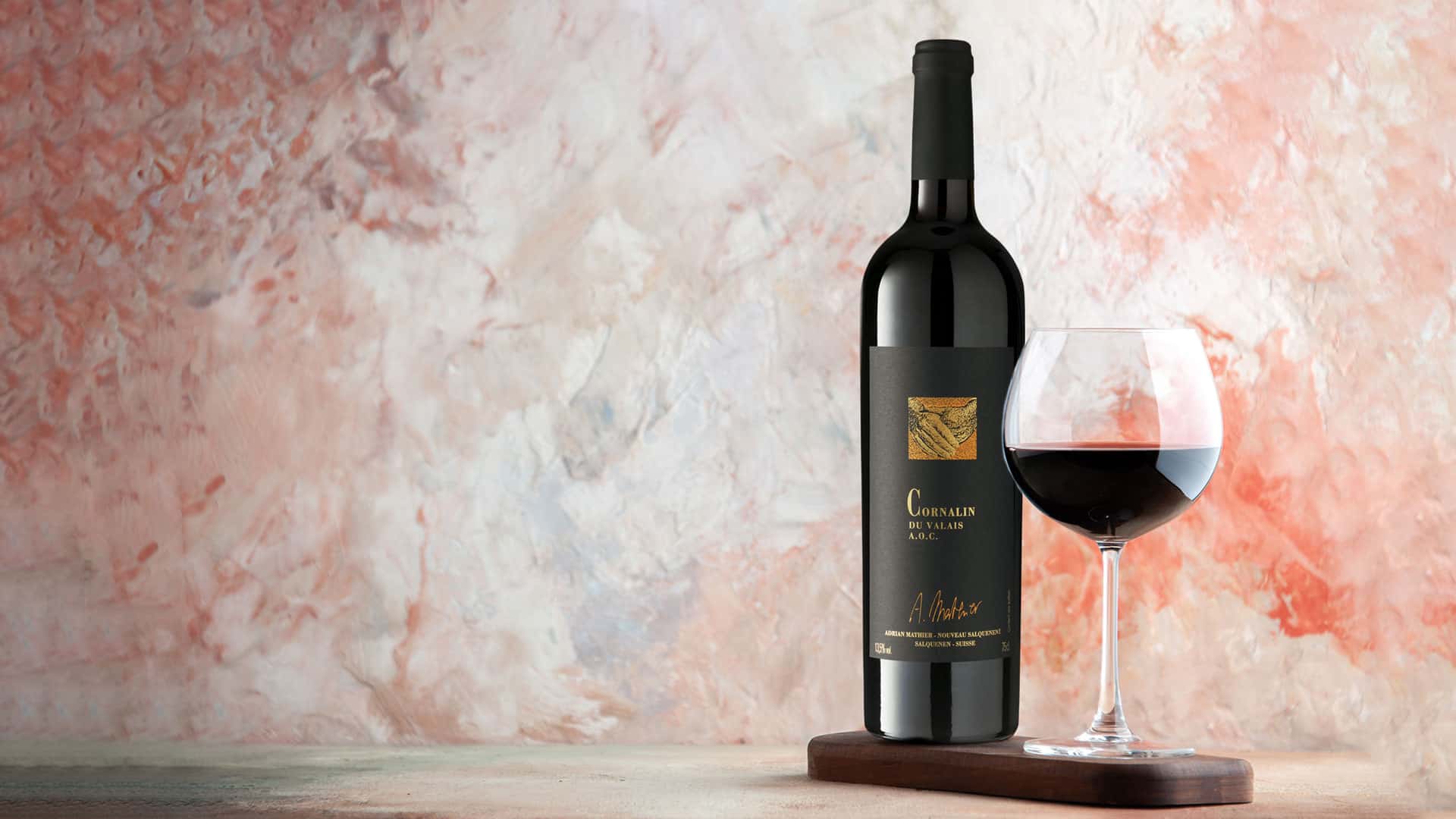
In wine jargon, the color of the wine is often referred to as the robe. Basically, it can be said that violet reflections are easily recognizable in a young red wine and brick-red tones in an older red wine. With increasing age, the color changes from a rich purple to a bland brown. White wines also tend to take on a brownish tinge when they have passed their zenith. At the best age, the wine shines in elegant golden colors, especially if it has been stored in oak barrels in the cave. However, it should be noted that the color also depends crucially on the grape variety. While Pinot Noir is as red as a ruby, Cornalin is almost as black as slate. The dark, rich colors testify to a powerful, full-bodied wine.
The senses are therefore already attuned at this stage. If all wines were as clear as a distillate, it would be much more difficult to classify them.
Aroma
In the language of wine, the term aroma stands for a clearly definable smell such as lemon or vanilla. The smell mainly determines the taste of a wine, on the one hand on the primary path by smelling the wine in the glass and on the other hand on the secondary path in the palate through the nasopharynx to the olfactory mucosa.
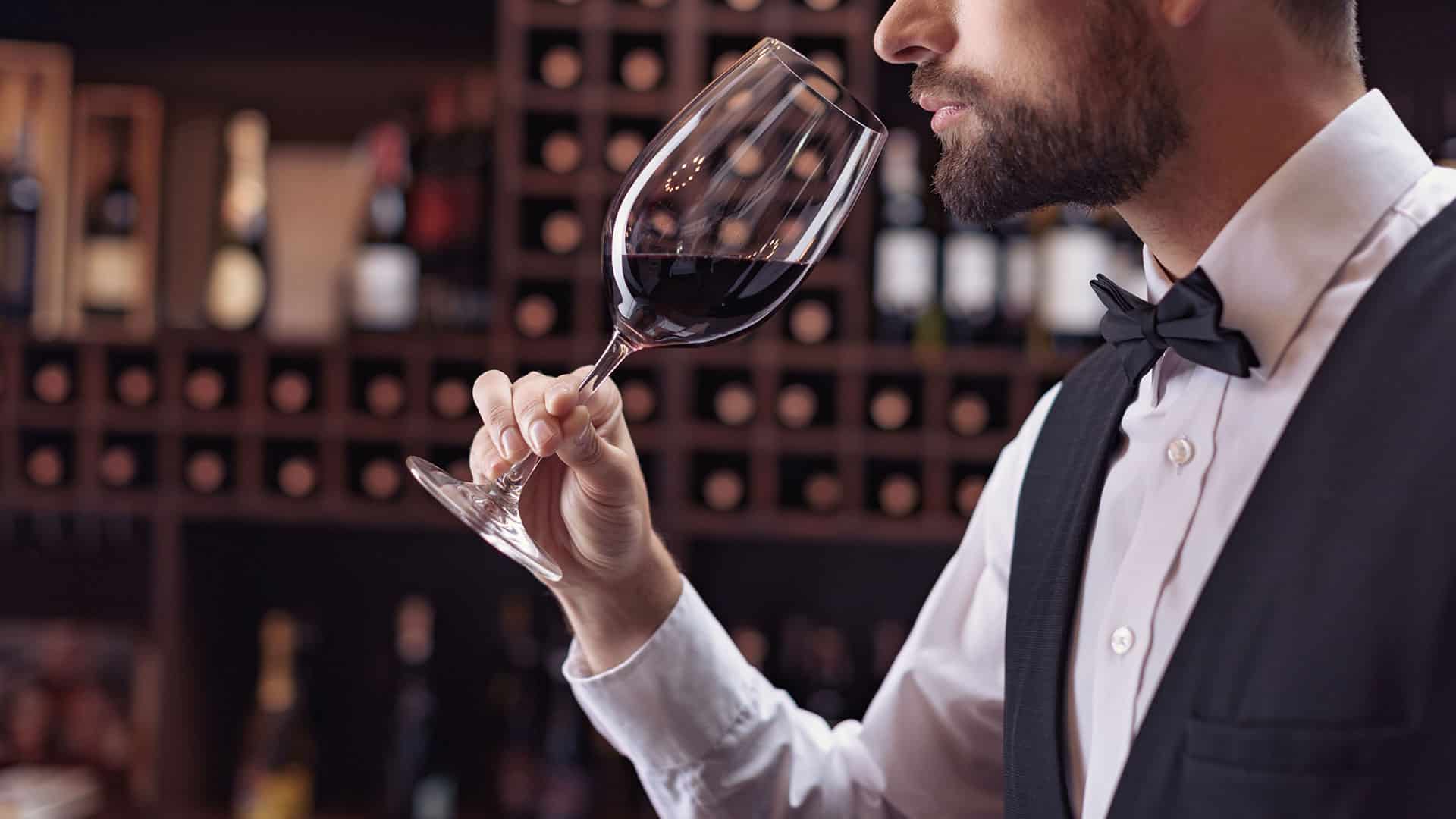
The interplay of several factors determines the quality and character of a wine:
- Grape variety and soil conditions
- Microclimate
- Wine region and geological conditions
- Vintage-related influences such as weather and hours of sunshine
- Cultivation method including pruning and fertilization
- Winemaking in the Cave
- Ageing and storage conditions in the cave
Primary flavors
The primary aromas are caused by odorous substances contained in the grape. The characteristic aromas of the respective grape variety are expressed in the primary aromas.
Muscat, for example, has particularly intense aromas and a bouquet dominated by the scent of fresh grapes.
Secondary flavors
During fermentation, the transformation of grape must into wine, a large number of other aromas are produced – the secondary aromas.
The conversion of sugar to alcohol is accompanied by a series of enzyme reactions that alter the original aromas.
The second fermentation, for example, is where enzymes convert malic acid into lactic acid. The wine loses its fresh fruit aromas, but is characterized by lactic aromas.
Tertiary flavors
The aromas of the ageing process are referred to as tertiary aromas. After the fermentation process, a new transformation of the aromas takes place in the barrel. The taste is refined, striving for complexity and harmony. The wooden barrel adds a woody and roasted aroma to the wine. The slightly porous oak creates mild oxidation aromas. The category of tertiary aromas also includes the ageing aromas that develop during storage in the bottle.
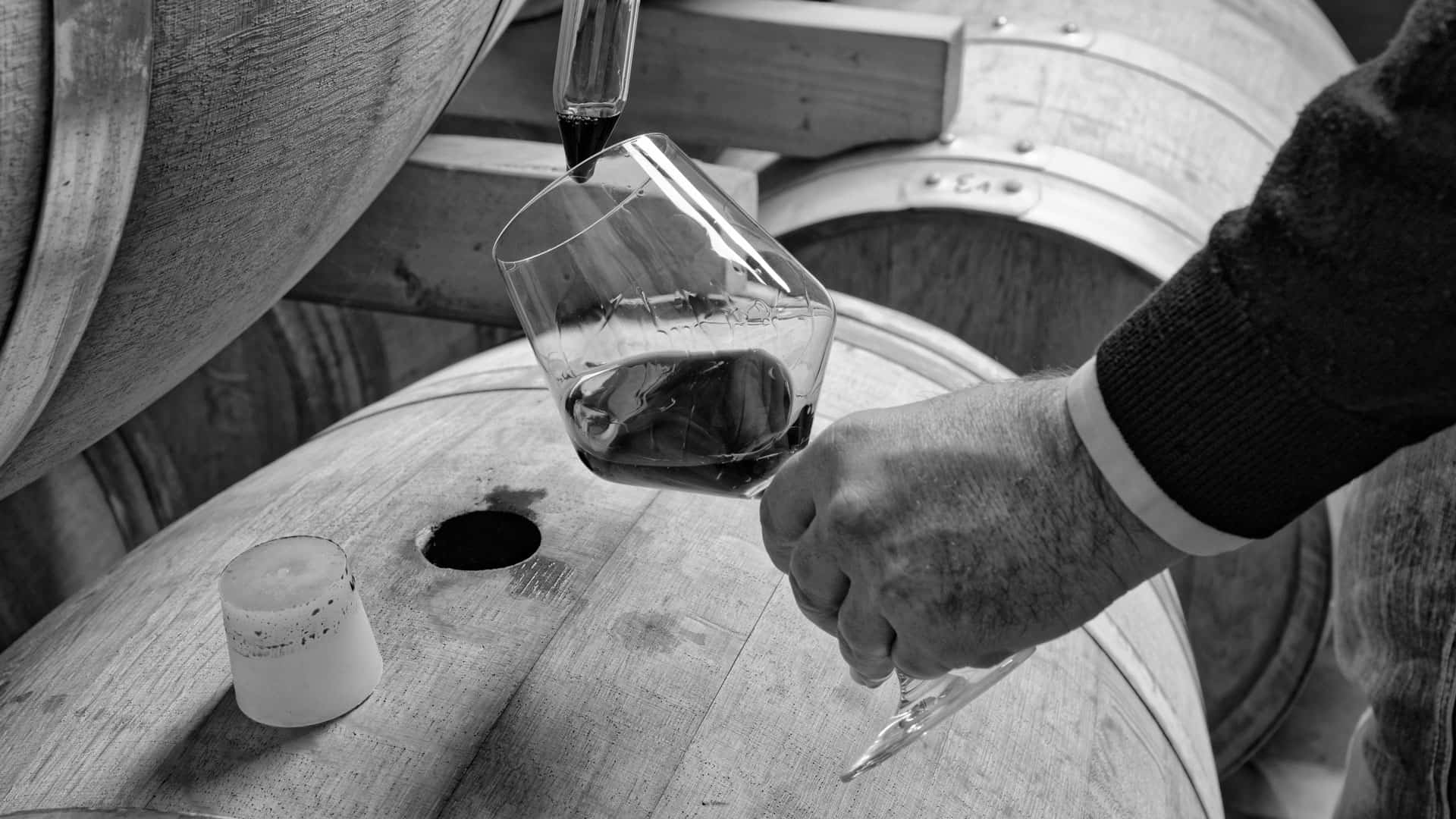
Off-flavors
The creation of wine is a complex process, the success of which depends on countless factors. Despite advanced technology and research, flaws and blemishes are still occasionally found in wines.
Flavor
The taste of wine is perceived by the palate during wine tasting. The tongue is covered with sensory taste buds, which are divided into four main flavors:
- Bitter sensation
- Salty sensation
- Sour sensation
- Sweet sensation
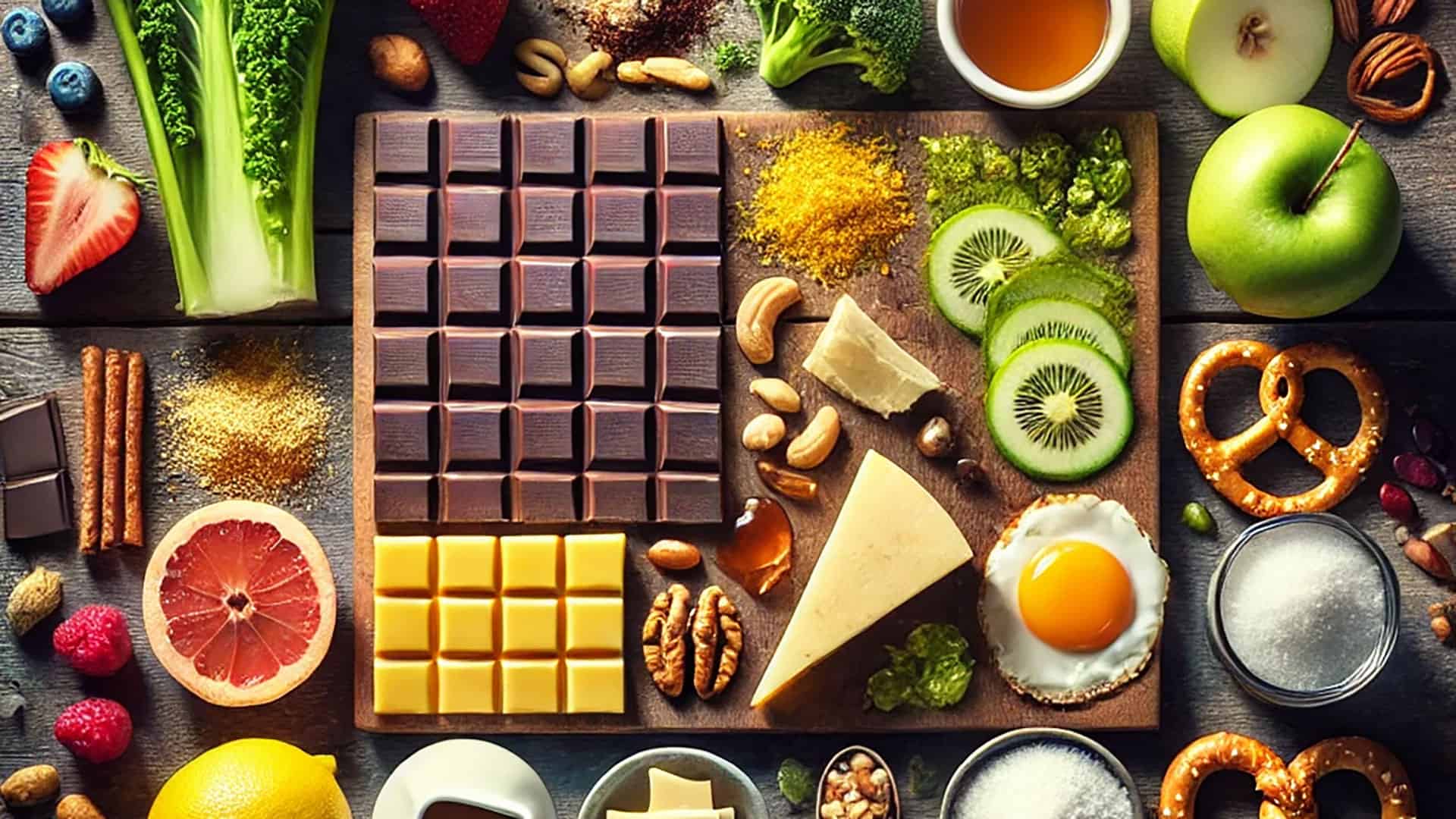
To gather sensations, let the tongue flow over the wine during tasting, similar to chewing. A sweet wine will mainly stimulate the senses in the front part of the palate, while young tannins can be felt in the back sections.
It is also interesting to note the differences in taste depending on the temperature. In particular, the perception of sweetness during a wine tasting is markedly temperature-dependent. The sweetness of a wine can double with a low sugar concentration and a temperature increase of 30 degrees Celsius.
#wallis #walliswine #salgesch #diegomathier #mathier #degustation #nature #walliswine #assemblage #cuvée #vinification #vinification #taste #winequality #aromas #wine
Wine tasting in Salgesch
Wine tasting in Hochdorf
Wine tasting in Interlaken
Wine tasting at trade fairs
Frequently asked questions about wine tasting
How do I taste wine?
The wine is judged on three main factors during a tasting:
- Color and clarity of the wine > Eye
- Smell or the bouquet > Nose
- Taste > Palate
It is therefore an interplay of sensory impressions.
What should I bear in mind when tasting?
- Refrain from smoking and drinking coffee before and during the tasting
- Do not eat spicy food before the wine tasting
- Be physically fit and healthy for the wine tasting
- Better to plan tastings in the morning
- The ideal time for wine tasting is shortly before midday
- Ventilate the tasting room well, no foreign odors
- Tasting in a bright room with natural light
- Provide bread and water to neutralize during tasting
- Suitable temperatures of the wines
How much does a wine tasting cost
A tasting of 4 wines costs CHF 10.00 per person, 6 wines CHF 15.00, 8 wines CHF 20.00 and 10 wines CHF 25.00.
Prices include wines, mineral water, bread, tasting documentation and expert guidance.
How long does a wine tasting last
A wine tasting usually lasts between 1:30 hours and 3:00 hours, depending on how many wines are tasted.
- 4 wines = 1:00 – 1:30 hours
- 6 wines = 1:30 – 2:00 hours
- 8 wines = 2:00 – 2:30 hours
- 10 wines = 2:30 – 3:00 hours
Can we taste at Mathier on Sunday?
No, the wine shop is closed on Sunday

